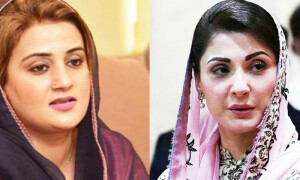It doesn’t take a Sherlock Holmes to figure that women are treated differently by banks and financial institutions in Pakistan.
And God forbid if you are a widowed pensioner — be prepared for a lifetime of humiliation at the hands of cocky employees who think giving someone their due share of money is a favour.
A little case study done in the run-up to this piece to map the customer journeys of a man and woman trying to open bank accounts makes the treatment accorded to the two genders quite clear. For example, while the non-salaried guy was asked about the source of money, the question for the girl was why she needed an account in the first place. Too often, adult females are required to get some form of validation from their male relatives to be a part of the banking net.
If one looks at the proportion of women in the finance industry, everything makes sense, of course. As per the last available figures, women made up 11.2 per cent of the total bank employees in 2018, down from 15.26pc — again, far from a satisfactory number. That share hovered around 5pc if we look at higher, seniority positions, with not a single organisation from the sample having a female chief executive or chairperson.
Adding a pink theme to their products is not the kind of female emancipation businesses think it is
No wonder then that they are forced to move towards informal means, such as committees, for their savings needs. In fact, the State Bank of Pakistan’s (SBP) Access to Finance Survey 2015 showed only 5pc of the women savers used formal channels. The Pakistan Microfinance Review 2019 gives the total number of female borrowers at 3.8 million while the story is no different when it comes to equity financing. In 2020, only three of the 50 startups that raised VC/angel money were led solely by women.
The new draft “Banking on Equality” policy by the SBP has some figures, such as the total number of unique female accounts (18.6m out of a total of 73.1m as of June 30, 2020). In terms of measures, it sets a timeline for financial institutions to induct women champions that can easily be approached by women. A somewhat similar recommendation is for the branchless networks.
Unfortunately, despite the occasional webinars and a draft on reducing the gender gap in financial services, there doesn’t really seem to be any concerted effort so far. That can be evidenced by the utter lack of demographic breakdowns available in the published figures.
Despite cumbersome documentation required to be submitted by customers that lays bare practically every personal recorded detail, there is hardly any reporting of disaggregated numbers.
Just take the SME financing dataset, for instance, which the SBP publishes on a quarterly basis. Everyone is well aware of the cumbersome process that any (potential) borrower has to go through in order to obtain capital and then compare it with the figures published. It’s bare minimum effort at best. All that sheet does is compile by values under a few lazy headers, such as the type of financial institution. As far as demographic characteristics of the recipients are concerned, the authorities don’t seem to care enough.
Forget about going beyond a simple male-female lens. We can’t even get the most basic things in order. Maybe one can argue that the demographic characteristics’ reporting is technically the Pakistan Bureau of Statistics’ mandate. But those guys have yet to figure out maintaining a standardised template for datasets.
Often hailed as the great equaliser, technology theoretically has the potential to reduce this gap by enabling women to, say, run their own businesses through on-demand platforms like Ghar Par or sell some form of merchandise using logistics players such as Trax, Bykea or even Careem. But again, due to a lack of (compiled) data and an absolute negligence of labour market trends, it’s not really possible to make any substantial claim about their impact so far. And the few statistics that are available to us since the ‘proliferation’ of the tech sector in the country, progress seems painfully slow.
“Very few technology platforms have adopted a gendered perspective towards designing financial products. In order to reduce the gender gap in financial inclusion, we need to take a human-centric approach; understanding myriad factors that hinder women’s access to finance and how to circumvent them.
“Only by overcoming this lack of focus on women — and by treating them as a heterogeneous group where religion, age, language and lifecycle among other factors have a compounded impact on a their demand for financial products — can the technology industry create impact and serve as an equaliser,” says Halima Iqbal, the co-founder of Oraan, an app that lets you manage committees and serves a user base that is around 84pc women.
At the risk of sounding too repetitive, this focus can only be realised when opportunities are created for women to be a part of the tech industry that is typically known for its misogynistic culture. Also, just hiring women won’t alone be enough — bringing them to actual leadership positions is a must. By now, it should at least be clear to businesses that adding a pink theme to their products is not the kind of female emancipation they think it is.
Published in Dawn, The Business and Finance Weekly, March 8th, 2021
















































